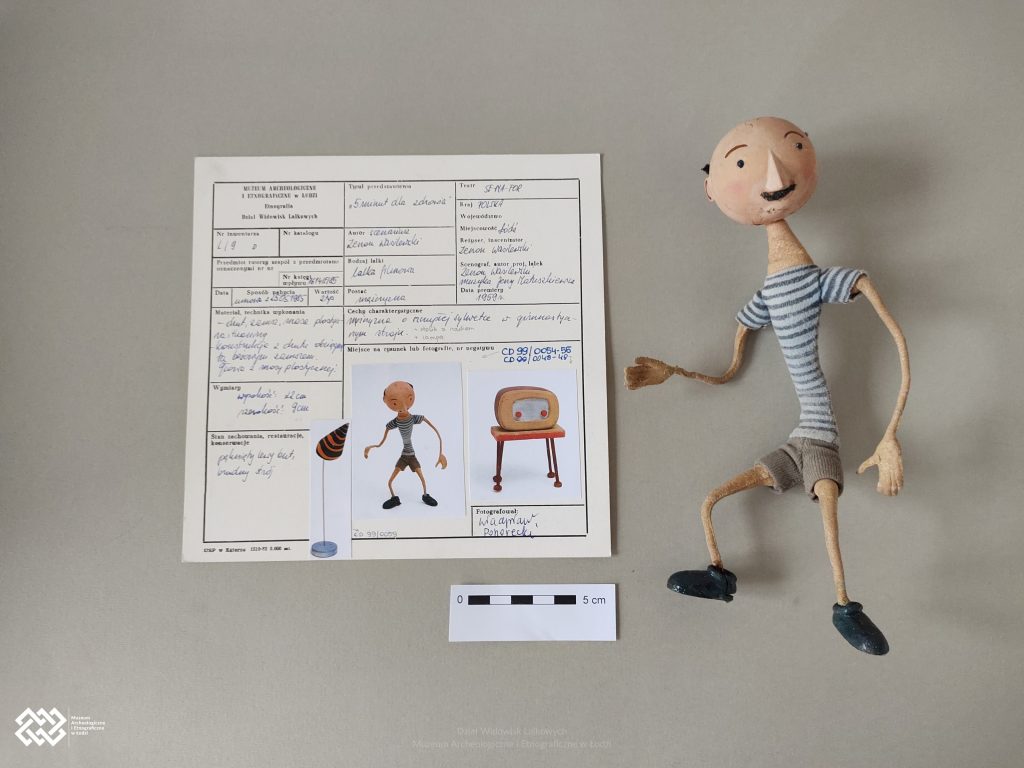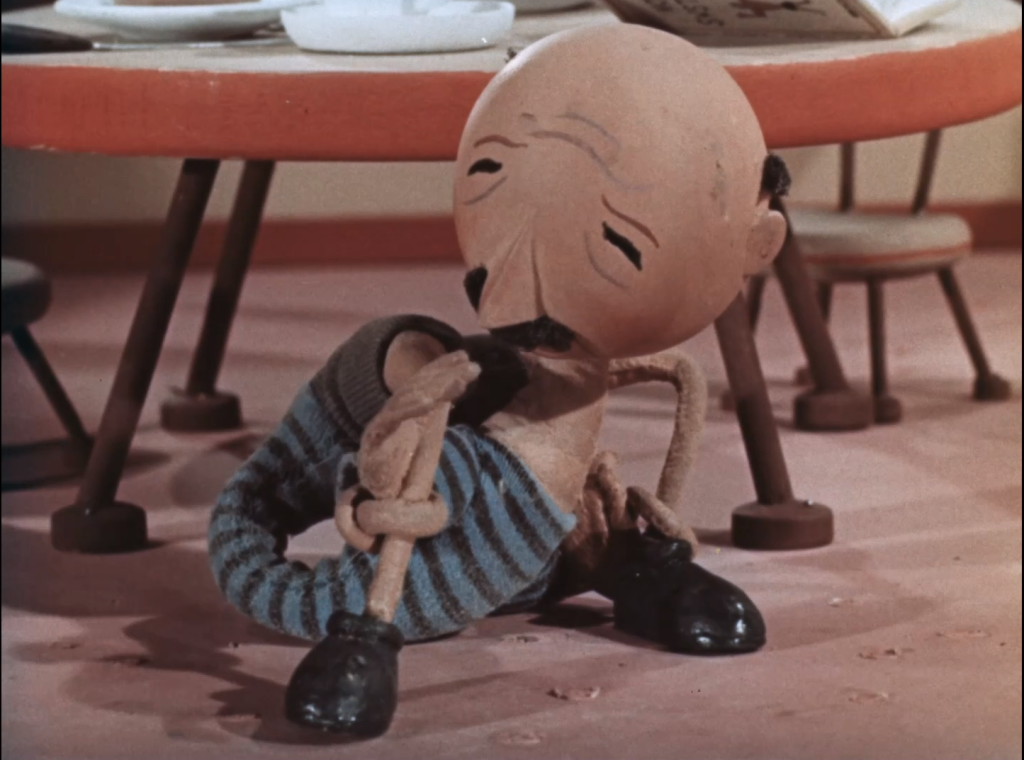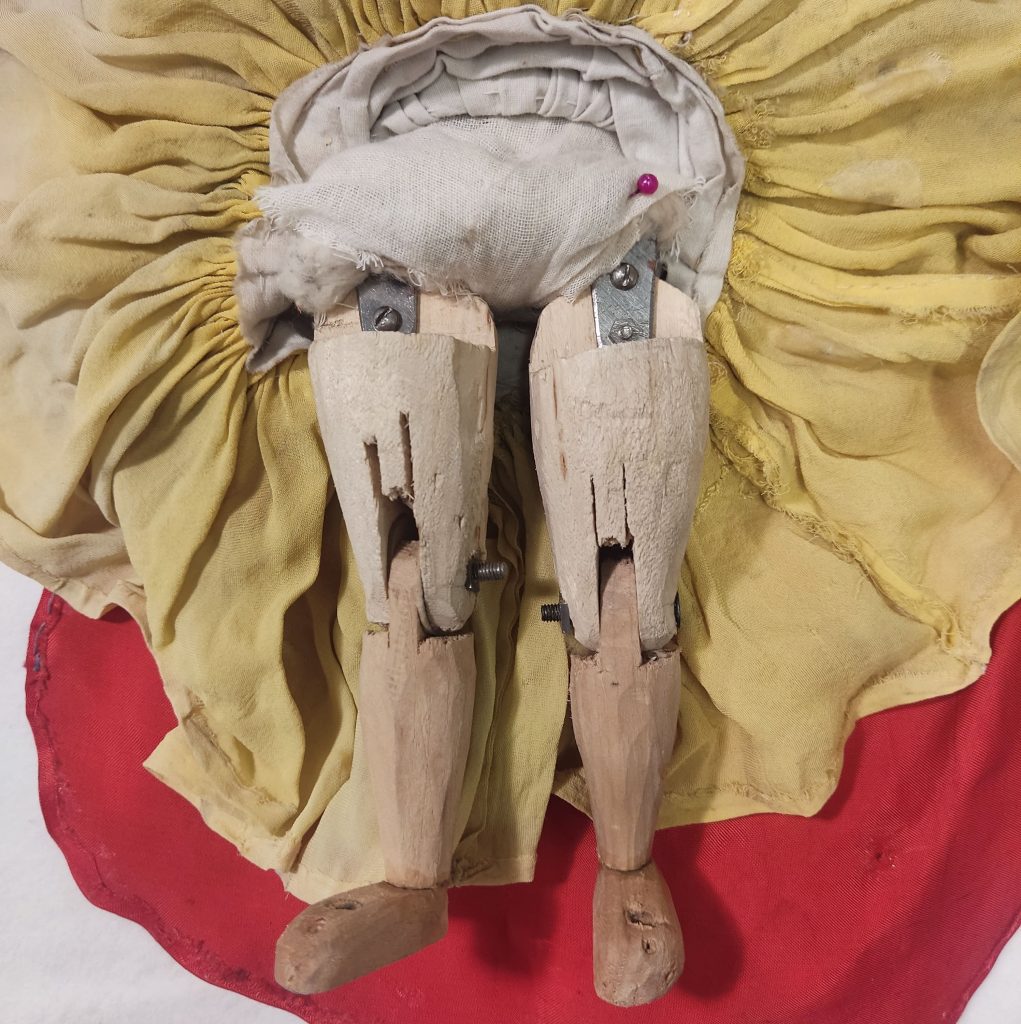Puppet films are often described as the work of a single author. The focus on the puppet featured in the film helps reveal the puppet filmmaking’s collaborative nature. A study on the collective mode of puppet filmmaking will be presented using examples of films from the ‘Se-Ma-For’ Studio of Small Film Forms in Łódź (1947-1999), an animation studio that produced the largest number of puppet films in Poland. The nature of puppet production best defines the profile of the studio, the character of the labour and the principles of matching in the creative teams.
The Se-Ma-For’s puppet production conventions were based on different approaches to constructing and animating objects. The conventions changed with the directors’ growing professional experience. Modes of puppet productions were developed collaboratively in a team led by a director based on the principle of accumulating ideas from different people. This principle was referred to by Howard Becker (1984) as a network of connections between the people who created it. The director, therefore, would be the person who creates such a network, and within this network, a convention is produced.
The filmmaking teams formed a cooperative in which the individual members played different roles. In such an arrangement, there is a mutual dependence: the director is the figure who organizes the work on the film, and it is the one who selects the crew, but it is also the skills of the individual members of the team that enable him to achieve the results he wants. It was not just the individual activities of the filmmaker, but the sum of the cooperative members, that made up the individual director’s puppet film convention.
The first puppet film directors in Poland after the Second World War, Ryszard Potocki and Zenon Wasilewski (both affiliated with the puppet film studio known since 1961 as ‘Se-Ma-For’), wrote scripts for their films or obtained them from external experts and only later worked on the puppets. Coming up with the ranges of movement for each film character was done differently each time, as different data were provided in the script. The director’s job was to prepare guidelines for the puppet animator and the puppeteer who would prepare and create a visual design of a puppet. In an editing letter to Paweł i Gaweł (Pavel and Gavel, 1946), Ryszard Potocki precisely characterizes the puppet’s way of moving: “with a dog’s step he crawls across the floor”; “he jumps like a hare”; “he turns somersaults”; “he helplessly unfolds himself” (Potocki: 1946).

A screenshot from Paweł i Gaweł (Pavel and Gavel, 1946) dir. Ryszard Potocki. Source: Filmoteka Narodowa-Instytut Audiowizualny.
Wasilewski, like Potocki, prepared detailed descriptions of the puppet movement in the script for the film 5 minut dla zdrowia (5 Minutes for Health 1959, dir. Zenon Wasilewski), where, describing the movements of Mr Niteczka, he writes of the puppet that: “he stands apart, stands on his head, moves his head between his legs, untangles his legs from his neck” (Wasilewski: 1959).

Puppet of Mr. Niteczka from 5 minut dla zdrowia (5 Minutes for Health, 1957) dir. Zenon Wasilewski. Collection of the Museum of Archaeology and Ethnography in Łódź. Photo by Nena Stańczuk. Source: courtesy of the Museum of Archaeology and Ethnography in Łódź.
The appearance of movable internal frames in anthropomorphic puppets is linked to the figure of Ryszard Potocki. The outer figure of the puppet for the first Polish postwar puppet film Pavel and Gavel (1946) was invented and made by Jerzy Zaruba, but it was Potocki who constructed the mechanism enabling the movements. He used aluminium, steel balls, bolts with nuts, sheet metal, brass, billiard balls, steel wire, tin and lead to build the metal frame of the puppet structure. Potocki’s puppet skeleton scheme was most likely developed based on the puppets used in the film The New Gulliver (1935, directed by Alexander Ptushko), on which he worked during his employment at Soviet Moscow-based film studio Mosfilm between 1934 and 1939. The doll’s body was probably made of cork and covered with fabric. Maria Chybowska animated the puppet’s movements.

A screenshot from 5 minut dla zdrowia (5 Minutes for Health, 1957) dir. Zenon Wasilewski with the main character, Mr Niteczka. Source: Filmoteka Narodowa-Instytut Audiowizualny.
Zenon Wasilewski’s puppets were different from those created in parallel by Potocki’s team, both in terms of the exterior and the frame construction. This information is confirmed by museum objects from the Film Museum in Łódź – puppets from the film Za król Krakusa (In the Times of King Krakus, 1947) by Wasilewski. They have heads made of plaster and, in place of the mouths, there are holes filled with plasticine modelled according to the need for specific emotions. The dolls’ legs are made of wood, with metal joints. Irena Wasilewska designed the costumes for the puppets.

Puppet of Princess Ludmilla from Za króla Krakusa (In the Times of King Krakus, 1947) dir. Zenon Wasilewski. Collection of the Film Museum in Łódź. Photo: Marzanna Gumińska. Source: courtesy of the Film Museum in Łódź.
In the films made at the ‘Se-Ma-For’ Studio of Small Film Forms, it was important to develop a standard production model that allowed for the repetition of steps and shorter filming times. Polish animation historian Paweł Sitkiewicz points to the film Zmiana warty (Changing of the guard, 1958) by Halina Bielińska and Włodzimierz Haupe as the one that brought a breakthrough in puppet film and renewed its convention (Sitkiewicz 2011:74). With the help of access to film puppets, the documentation accompanying the making of the films, as well as the analysis of films previously unavailable due to the lack of digital versions, we can conclude that the march of the directors–innovators of puppet film began much earlier. The key figures of the ‘kinolalkarze’ (cinemapuppeters) (Podgórski 2022) who worked with puppets between 1946 and 1970 were Ryszard Potocki, Zenon Wasilewski, Edward Sturlis, Jerzy Kotowski, Stefan Schabenbeck and their teams. Their philosophy of the film puppet – in both its prefilm and film period (Wells 2014) – indicates a strong awareness of the influence of the materials used and the shape and technology of the puppet on the final screen effect. It is also testimony to distinct visions of filmmaking and studio organization (Ciszewska 2023) as well as the ability to form teams, often consisting of the closest family members: Ryszard Potocki’s closest collaborator was his second wife, Maria Chybowska. In the case of Zenon Wasilewski his sister, Irena Wasilewska, worked with him.

Puppet of King Krakus from Za króla Krakusa (In the Times of King Krakus, 1947) dir. Zenon Wasilewski. Collection of the Film Museum in Łódź. Photo: Marzanna Gumińska. Source: courtesy of the The Film Museum in Łódź.
A consequence of the Se-Ma-For’s increasing production volume was the outsourcing of craft work to people other than the director. The ways of working with the film puppet, implemented in small production teams led by directors, evolved into conventions. The conventions were refined by successive generations of studio employees, this then led to the professionalization of production and the separation of a group of specialists called ‘puppeteers’, working in a puppet construction workshop set up in the studio for this purpose. This included, among others, Eugeniusz Sturlis, Maria Chybowska, Wiesława Armatysowa, Irena Wasilewska, Zofia Grott, Janina Formańska, Czesława Kowalska, Jerzy Podgórski, Bogdan Chudzyński, and Mirosław Bartosik. A sign of the high reputation of the puppet-making convention at the now defunct ‘Se-Ma-For’ Studio of Small Film Forms in Łódź is the involvement of its employees in many puppet productions, including the Oscar-winning film Peter and the Wolf (dir. Suzie Templeton, 2006).
Acknowledgements
The text is the result of the CEUS-UNISONO project of the National Science Centre, Poland, and the Czech Grant Agency entitled “Animation studios in Gottwaldov and Lodz (1945/47-1990) – Comparative Collective Biography”, no. 2020/02/Y/HS2/00015
References
Becker, H. S. (1984), Art Worlds, Berkeley: University of California Press.
Ciszewska, E. (2023) Materialne warunki wytwarzania konwencji filmu lalkowego w Polsce. Działalność Ryszarda Potockiego i Zenona Wasilewskiego w latach 1945-1950 jako architektów Studia Małych Form Filmowych ‘Se-Ma-For’ w Łodzi. (Material Factors Influencing Puppet Film Conventions in Poland: Examining Ryszard Potocki and Zenon Wasilewski’s Role as Architects of the Se-Ma-For Studio of Small Film Forms in Lodz (1945-1950) “Pleograf. Historyczno-Filmowy Kwartalnik Filmoteki Narodowej”, no. 4, pp. 6-31.
Sitkiewicz P. (2011) Polska szkoła animacji (Polish School of Animation), Gdańsk: Wydawnictwo Słowo/Obraz Terytoria.
Wells P. (2014) Chairy Tales: Object and Materiality in Animation, “Alphaville: Journal of Film and Screen Media”, No. 8, pp. 1-18.
Archival sources
Ryszard Potocki. Archiwalia, Archiwum Filmoteki Narodowej – Instytutu Audiowizualnego, sygn. A4.
Archiwum Zenona Wasilewskiego, Archiwum Filmoteki Narodowej – Instytutu Audiowizualnego, sygn. Z-61
Collection of the Museum of Archaeology and Ethnography in Łódź
Collection of the The Film Museum in Łódź
Oral sources
Interview with Jerzy Podgórski conducted in 2022, Animation studios in Gottwaldov and Lodz (1945/47-1990) – Comparative Collective Biography project archive, funded by the Polish National Research Centre (PI: Ewa Ciszewska), sygn. SMFF_0009.
Ewa Ciszewska is an Assistant Professor in the Department of Film and Audiovisual Media at the University of Lodz. Her recent publications concern transnational representations of Polish and Czechoslovak film cultures during the Cold War, Polish animation, and film education. She is researching the history of a Polish animation film studio in Lodz in comparison with Czech animation studio history within the framework of the project “Animation studios in Gottwaldov and Lodz (1945/47-1990) – Comparative Collective Biography”, No. 2020/02/Y/HS2/00015 CEUS-UNISONO program (2021-2025), with prof. Pavel Skopal. She is a member of the Polish Animation Research Group.
Agata Hofelmajer-Roś is a PhD student at the Doctoral School at the University of Silesia. Her research concerns film education in Poland and Europe, the activities of cultural institutions in film culture creation, and the presence of film analysis in educational activities. She is a grantee of the CEUS-UNISONO NCN project “Animation studios in Gottwaldov and Lodz (1945/47-1990) – Comparative Collective Biography”, No. 2020/02/Y/HS2/00015. She completed an internship at the British Film Institute (2022) and was a two-time grantee of the Minister of Culture and National Heritage (2016 and 2019). She writes a blog about films for younger audiences: kinodzieci.info
